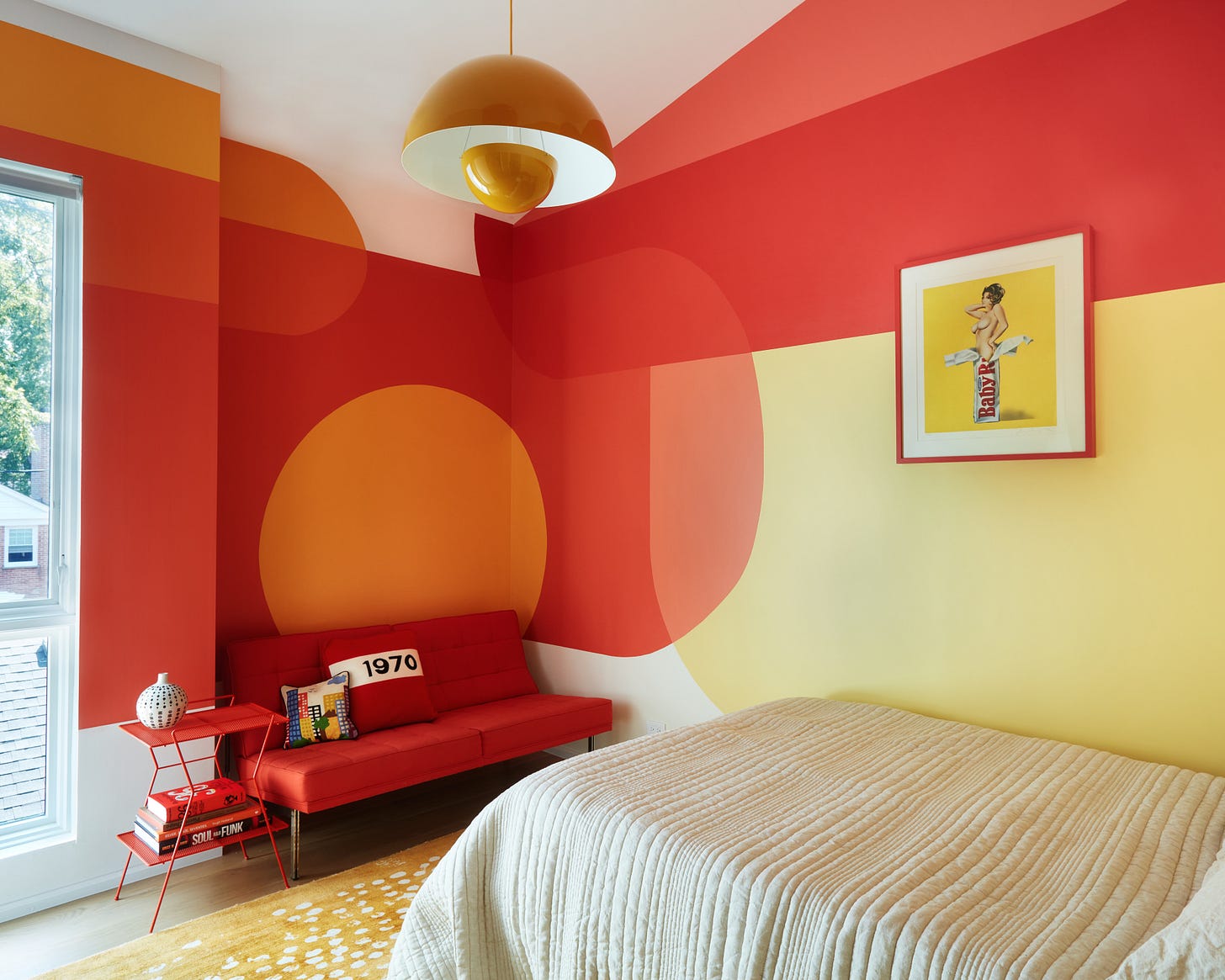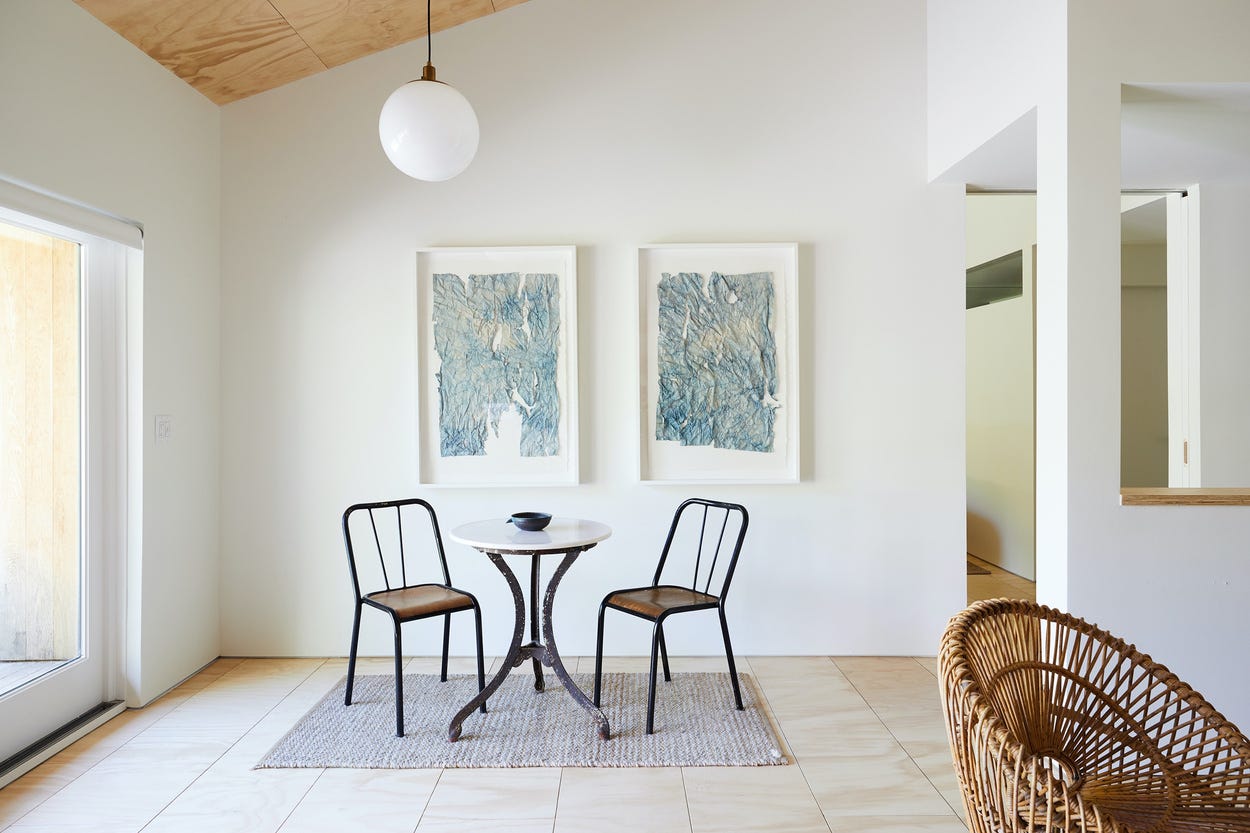⊛ No Offense | Anna Cerniglia, Johalla Projects
The role of art curation in creating a sense of place
We don’t often consciously process an art program’s role in placemaking, despite its oversized impact. We admire the work, but we’re not privy to the thinking behind the work. That’s why, for this first drop in No Offense, we speak with Anna Cerniglia, owner of Johalla Projects and seasoned art curator.
Anna Cerniglia
Owner & Creative Director of Johalla Projects
Anna Cerniglia, Owner and Creative Director of Johalla Projects. Johalla offers art advising, curation, creative design collaboration, and the execution of large-scale visual art installations, with a focus on emerging and mid-career artists, contemporary design, and a nod to distinct bespoke objects.
Art and brand are like a cold drink and a hot summer day. Art and interior design are like peanut butter and jelly. Art and differentiating are like Scottie Pippen and Michael Jordan (before the recent kerfuffle).
Art plays a major role in our thinking at No Walls Studio, and should be front-and-center in your thinking as placemakers. When we met Anna, we already knew the power of her work: from the Hoxton Hotel lobby to the Cody Hudson Mural adorning 167 Green Street, she’s left an undeniable mark on some of Chicago’s most storied new developments. She’s a forever student of the art world, constantly adapts her work to the newest creative movements, and has a keen understanding of how best to make spaces shine.
How did you get into Art Curation?
I received my BFA in photography. When I was graduating, I had a roommate, who worked at the Fireside. It was a music venue that had a lot of DIY bands. When the fireside closed, he and the owner went and opened another venue in a church. And they basically were like, you know, do you want to come with us? Do you want to throw art parties? Do you want to put art installations up? I'm like, yeah, I'll throw a party in a church.
That was like my first trial at putting together an art show. Super unconventional, super non traditional. [It was] my first taste curating a space.
How’d you get into Johalla?
I did what you normally do in your 20s, which is basically work as much as you can to pay rent. I worked at Northwestern as an image specialist, worked as an art admin for an art fair, and worked for a gallery. Then I worked at a production house where we photographed products, and I was the bottom of the totem pole...you know, only woman there, and I think after like three years of doing all of that work, I was like, I need to do something else.
Since I have Italian citizenship, I left to go to Italy for a year. I ended up getting [an internship] with a curator out in Rome. I left all my work for Italy to become a curatorial assistant. And when I came back [to Chicago], I started Johalla in a second floor Wicker Park loft. I lived there, curated shows, and I was a nanny to an incredibly supportive family. And so, I started Johalla as basically an apartment [art] gallery.
So what’s Johalla Projects Today?
We are curators and consultants. We work with developers, interior designers, architects, and private collectors on building their art collections for their buildings, and building in our [art] program for the space... this can [range] from art on the walls, to small art objects, to video programs to sculpture work to, sometimes, event programming.
For me, if you want to support an artist, or you want to support something around art, I'm down. I want to help you and I want to make it as progressive or involve the community as much as I possibly can. So I'm taking the idea of an exhibition space and going into the public sphere with it.
How does your process change with different types of spaces?
I think about process a lot. I think a lot about what has been done, what should be done, what can I do? [With] every new space, I'm super grateful for that opportunity. Because I look at art as something that people need. Personally, I feel like everybody should be including it into their spaces.
So with every new space, I try to learn about the owners, and the architects and designers who are involved. I try to become a sponge, and listen to what everybody is doing. There's already an intent, and I have to compliment that intent. That's a big collaboration...they're building this space, but how do I add more to that space? So first and foremost, I like to listen and learn. That’s a big part of my process.
After listening, I do a lot of research and I think about what the area needs. I do a lot of studio visits, I read a lot, I just try to stay up with what people are making. And then I propose ideas that will fit that space and also be inclusive of the community.
In talking to you about your business, you’re almost a translator for art. You take something abstract and conceptual and make it consumable for placemakers.
A lot of people really love art. Everybody I work with loves artists and loves art and loves the creative world, but they need help tapping into it.
I feel like I am kind of a translator because I’m providing that platform for the architects and the owners to basically say I want this, and then I do the work to get the artists comfortable or find the artists who actually fit in. But there is also a lot of transition work that needs to happen for artists to place their work into a space that isn’t a white cube into a public space.
[Growing up as a first generation kid] I translated for my parents. I was reading legal documents at 7 years old. To be honest, at 7, I didn’t know what I was even reading, but I became comfortable as someone who would translate and make people comfortable in a space they weren’t familiar in. That upbringing has helped me now.
It sounds like part of that translation is defining the value of a great art program for developers. Really demonstrating or communicating the return on that investment.
It’s funny because I obviously think about this all day long. I think about the prominence and importance of artwork in a space. But personally, I just see it as a community [building] and education.
I think a really good collection is like bringing a lot of different groups into a space and then having somebody walk up to something and be like: What is this? Where did it come from? And then for me to say, Oh, this is from xyz studio, you know, on xyz street and this artist did this album cover and now they're doing this.
That literally happened to me two days ago. Somebody emailed me about the Hoxton and they said, you know whose work is this? And I said, Oh, that's that's Brandon Breaux. He designed a few of Chance The Rapper’s albums, and now he's this incredible painter and has this insane body of work… and I don't know if the person [really] cared–I think he just wanted to buy the artwork off the wall–but at the end of the day I hope I opened up another world for them.
No Walls Studio is a design and brand studio that helps placemakers create spaces that people love.
Our mission is to make sameness extinct in real estate, which means that everything we do comes with new ideas and unique angles — all, grounded in a deep understanding of culture and consumers.
We do three things for our clients (often, all in the same project):
Research
Brand Development
Spatial Experience Design
Want to work with us or learn more? Reach out to us. 📧

















